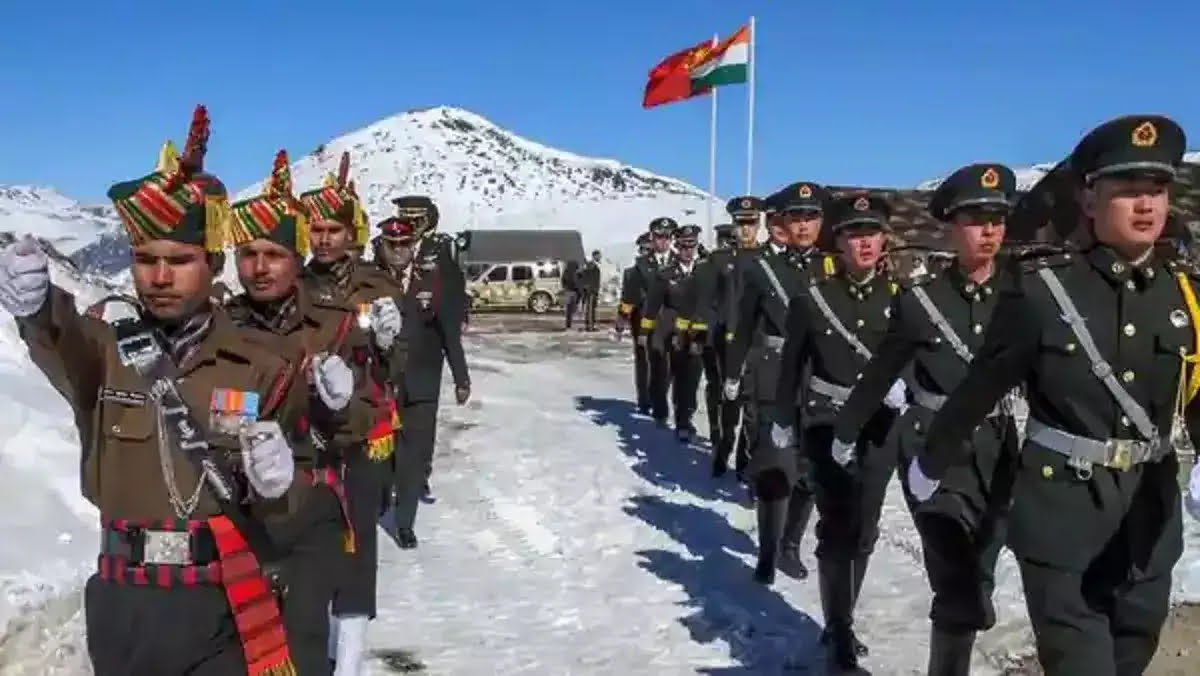In Beijing, officials from India and China talk about the standoff at the border. This is a first.

Officials from India and China met in Beijing on Wednesday to talk about the standoff along the Line of Actual Control (LAC). The Indian side insisted that only the withdrawal of front-line troops would help get things back to normal between the two countries.
The statements made by the external affairs ministry and the foreign ministry of China didn’t point to any quick progress in talks about proposals for disengagement. The talks were part of the Working Mechanism for Consultation and Coordination (WMCC) on India-China Border Affairs. This was the group’s first meeting in person since July 2019.
Soon after the fight on LAC started in May 2020, WMCC was set up, but since then, all of its meetings have been held virtually because of the Covid-19 pandemic. In a time when relations between the two countries were cold, meeting in person gave the talks more weight.
India and China each have more than 50,000 troops in the Ladakh sector, and tensions rose again in December after several soldiers from both countries were hurt in a fight along the LAC at Yangtse, near Tawang in Arunachal Pradesh.
In addition to looking at the situation along the LAC in the western sector, the WMCC meeting “discussed proposals for disengagement in the remaining areas in an open and constructive way,” according to a statement from the external affairs ministry.
Such a pullback “would help bring back peace and quiet along the LAC in the Western Sector and make it possible for bilateral relations to get back to normal,” the report said.
“To reach this goal in line with the bilateral agreements and protocols that are already in place, they agreed to hold the next (18th) round of the Senior Commanders meeting as soon as possible. The statement said that the two sides agreed to keep talking through both military and diplomatic channels.
The Chinese statement said that during the meeting, the two sides talked about “positive” progress in border management, confirmed the results of the two countries’ disengagement of border troops in Galwan Valley and four other places, and “exchanged views honestly.”
It also said that both sides agreed to “actively implement the important agreement between the leaders of the two countries to help stabilise the border situation even more.”
The Chinese statement said that the two sides agreed to build on the results of their talks, stick to the spirit of their agreements, avoid repeating situations, and keep the peace and quiet in border areas.
“The two sides agreed to move forward based on the agreement they had already reached, speed up the resolution of issues related to the western section of the Sino-Indian border, and find a solution that is acceptable to both sides as soon as possible,” the Chinese statement said. “The two sides also looked into other ways to make the border situation better and agreed to work to bring the border situation into a phase of normalised control.”
Shilpak Ambule, a joint secretary in the external affairs ministry who is in charge of East Asia, led the Indian side at the WMCC meeting. Hong Liang, the director general of the foreign ministry’s boundary and oceanic affairs department, led the Chinese side.
Ambule also met with Hua Chunying, who is an assistant foreign minister, on Wednesday. A short statement from the Chinese foreign ministry said that they talked about bilateral ties and the situation at the border.
After more than two dozen rounds of diplomatic and military talks over the past three years, India and China pulled their front-line troops back from the two sides of Pangong Lake, Gogra, and Hot Springs. But they haven’t been able to agree on things like Depsang and Demchok, which are places where they disagree.
In June 2020, twenty Indian soldiers and at least four Chinese troops were killed in violent fighting at Galwan Valley. It was the first time in 45 years that someone died along the LAC. External Affairs Minister S. Jaishankar said that China is breaking agreements on border management by putting more troops along the LAC. He also made it clear that peace and quiet in the border areas are necessary for normalising relations between the two countries.
The Chinese side, on the other hand, has asked that the border standoff be put in its “proper place” so that trade and investment can move forward between the two countries. The relationship between India and China is at its worst point in more than 60 years.
Senior military leaders from India and China met at the Chushul-Moldo border crossing on December 20 for the 17th time since the standoff began. The last time WMCC met was on Oct. 14, 2022. At neither of these meetings, any progress was made, and the two sides only agreed to talk more to find a way to end the standoff.
Hu Shisheng from Beijing’s China Institutes of Contemporary International Relations said that the meeting was a good sign.
“It’s pretty strange that two big neighbours haven’t done anything like this in more than three years. So, this means a lot, of course. “It’s not just because India will host a number of diplomatic events this year, but also because the two countries can’t afford to be so far apart for so long,” Hu said.
“If we don’t talk to each other, we won’t be able to find things we have in common and understand each other better, which are the building blocks of trust. I really hope that this meeting is the start of a new set of interactions between these two countries.”



